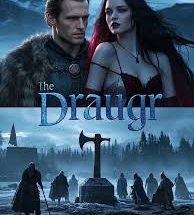The world of Viking history and legend is about to be set ablaze once again as the saga of Ragnar Lothbrok, the legendary Norse warrior, raider, and king, returns to capture the imagination of audiences worldwide. Known across the lands of Scandinavia and beyond for his daring raids, cunning strategies, and unparalleled charisma, Ragnar’s story has long transcended the boundaries of mere history, entering the realm of myth and legend. With the release of a thrilling new chapter in his saga, fans of Viking lore are being offered a rare opportunity to witness once more the exploits of a figure whose name has echoed through the centuries as a symbol of ambition, bravery, and relentless pursuit of glory. This new chapter promises to blend historical accuracy with dramatic storytelling, offering a vivid window into the tumultuous, blood-soaked world of the Viking Age.
Ragnar Lothbrok’s legend has been passed down through centuries, appearing in medieval sagas, Norse poetry, and chronicles of the time. While scholars debate the historical accuracy of some accounts, there is little question that Ragnar embodies the quintessential Viking hero: a figure whose life and deeds inspire both awe and terror. The renewed interest in Ragnar comes at a time when audiences are increasingly fascinated by stories that combine epic action with complex characters, and the saga’s revival taps into this craving perfectly. This new chapter delves deeper into Ragnar’s personal struggles, his relationships, and the relentless pressures of life as a Viking leader, all while maintaining the high-stakes action and dramatic intensity that fans have come to expect.
At the heart of Ragnar Lothbrok’s story is his transformation from a restless farmer into one of the most feared and respected Viking chieftains. His early life, often depicted in sagas as humble and unremarkable, serves as a testament to his extraordinary ambition. It is said that Ragnar’s sharp intellect and insatiable curiosity set him apart even in youth. Unlike many of his contemporaries, who were content with the rhythms of rural life, Ragnar dreamed of exploration and conquest. This hunger for knowledge and adventure drove him to take risks that others would never dare, leading to the fabled raids that would secure his place in history. The new saga emphasizes this aspect of his character, painting Ragnar not merely as a brute warrior but as a visionary strategist, a man whose mind was as formidable as his sword.
The Viking Age was defined by its brutal conflicts, its intricate alliances, and its unyielding pursuit of wealth and territory. Ragnar’s exploits exemplified all of these elements. From daring raids on the coasts of England and Francia to cunning political maneuvering within the Scandinavian kingdoms, Ragnar’s life was a tapestry of triumphs and tragedies. The new chapter promises to bring these adventures to life in vivid detail, immersing readers and viewers in the sights, sounds, and emotions of Viking society. The story captures the thrill of battle, the tension of diplomacy, and the raw human drama that arises when ambition collides with fate. Audiences will find themselves walking alongside Ragnar, experiencing both the exhilaration of victory and the bitter sting of defeat.
Integral to Ragnar’s legend are the relationships that shaped his life. His marriages, alliances, and rivalries provide a rich backdrop against which his story unfolds. Each connection offers insight into his character, revealing a man who is as capable of profound loyalty as he is of ruthless cunning. The new saga pays particular attention to these interpersonal dynamics, exploring how Ragnar’s choices affected not only his destiny but the lives of those around him. Love, betrayal, ambition, and revenge are woven seamlessly into the narrative, creating a multi-dimensional portrait of a man who was never content to exist merely within the confines of his time. The saga also highlights the pivotal role of women in Viking society, showcasing figures such as Lagertha and Aslaug, whose influence and resilience were as significant as any battlefield victory.
One of the most compelling aspects of Ragnar’s story is his relentless pursuit of legacy. Unlike many historical figures whose deeds fade with time, Ragnar sought to ensure that his name would endure. The new chapter explores this theme in depth, examining how Ragnar balanced personal ambition with the responsibilities of leadership. His vision extended beyond immediate conquest, encompassing the establishment of dynasties and the shaping of societies. This focus on legacy adds a philosophical dimension to the saga, inviting audiences to reflect on the nature of power, fame, and the human desire to be remembered. Ragnar’s story becomes not just a tale of swords and shields but a meditation on mortality, ambition, and the forces that drive individuals to greatness.
The revival of Ragnar Lothbrok’s saga also allows for a reexamination of Viking culture and its complexities. Often portrayed in popular media as purely violent and barbaric, the new chapter offers a more nuanced perspective. It emphasizes the Vikings’ sophisticated understanding of trade, navigation, and governance, presenting Ragnar as a product of this rich cultural tapestry. Through his eyes, audiences gain insight into the codes of honor, loyalty, and strategy that governed Viking life. The story delves into the ethical and moral dilemmas faced by leaders in a world where survival often demanded brutal decisions. This thoughtful portrayal enhances the realism and depth of the saga, transforming it from simple historical adventure into an exploration of human nature and societal evolution.
Of course, no retelling of Ragnar Lothbrok’s life would be complete without acknowledging the supernatural elements that permeate his legend. From prophetic dreams to encounters with gods and mystical creatures, the sagas are replete with stories that blur the lines between history and myth. The new chapter embraces this mystical dimension, incorporating elements of Norse mythology to heighten drama and underscore the spiritual beliefs that shaped Viking life. Ragnar’s interactions with fate, destiny, and the divine provide an additional layer of intrigue, reminding audiences that the Viking world was one in which the tangible and the mythical were inextricably intertwined. These mythic elements enrich the narrative, making it not only an epic tale of human endeavor but also a story of cosmic significance.
The narrative structure of the new chapter is carefully crafted to balance action with character development. Each battle, raid, and political maneuver serves to advance the story while simultaneously revealing new facets of Ragnar’s personality. The pacing is designed to maintain suspense, with moments of intense conflict interspersed with quieter scenes of introspection, strategy, and relationship-building. This approach allows audiences to engage with Ragnar on multiple levels: as a warrior, a thinker, a leader, and a man confronting the consequences of his choices. The result is a saga that resonates emotionally while delivering the adrenaline-fueled excitement that fans expect from Viking narratives.
In addition to its narrative depth, the new chapter is notable for its commitment to authenticity and historical detail. Scholars and historians have been consulted to ensure that the depiction of Viking life, warfare, and society reflects the best available evidence. From the design of ships and weaponry to the rituals and customs of Norse society, the saga aims to immerse audiences in a world that is both vivid and credible. This attention to detail enhances the overall impact of the story, allowing readers and viewers to experience the Viking Age as more than just a backdrop for adventure—it becomes a living, breathing environment that shapes the characters and their destinies.



